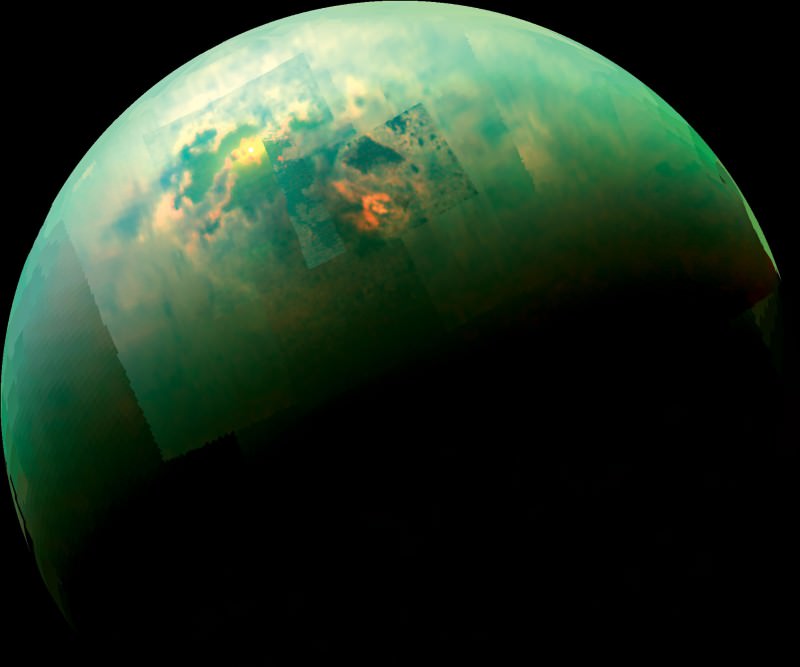The cheapest orbit from Titan’s surface to Earth involves swinging in close to Saturn for an Oberth Maneuver – a power-burn at the bottom of a gravity-well, to maximise the hyperbolic velocity when leaving the primary mass’s Sphere of Influence. There’s four massive objects involved in the return to Earth – Titan, Saturn, the Sun and Earth – all of which dominate the gravitational environment around them in their respective Spheres of Influence. Titan’s is embedded in Saturn’s, while Saturn and Earth are both embedded in the Sun’s.
The minimum energy orbital transfer is, of course, the Bi-Tangential Trajectory or Hohmann Trajectory, where the ellipse of the vehicle’s orbit touches the orbits of the planets tangentially. This minimises the velocity changes at both ends, but is one of the slowest orbits. In the case of flying from Titan to Saturn, then Earth, the total velocity change (delta-vee) is about ~6 km/s. For an assumed exhaust velocity of 2.7 km/s, that’s a mass ratio of about 9, with aerocapture assumed for arrival in the Earth-Moon system. Chief bulk cargo from Titan could be methane for the meth-lox using SpaceX Starships, or nitrogen rich compounds scooped up from Titan for making Space Elevators on the Moon and Mars.
There’s a few things to define further in this analysis. You might be wondering, dear reader, why the Titan rockets don’t use methlox themselves, since methane makes up 5% of the lower atmosphere of Titan. Sadly, the chief difficulty is extracting oxygen from native resources, chiefly water-ice and carbamated compounds made from CO2. Oxygen makes up 8/9 the mass of water, but cracking it off the water molecule is energy intensive. Acetylene and hydrogen are available with minimal processing, and making liquid hydrogen from gaseous H2 at 94 K isn’t an onerous prospect either.
Final point, which I need to work on, is the vacuum performance of the C2H2+H2 rockets that Glassman proposed in his patent, as well as reasonable parameters for launching from Titan surface conditions.

